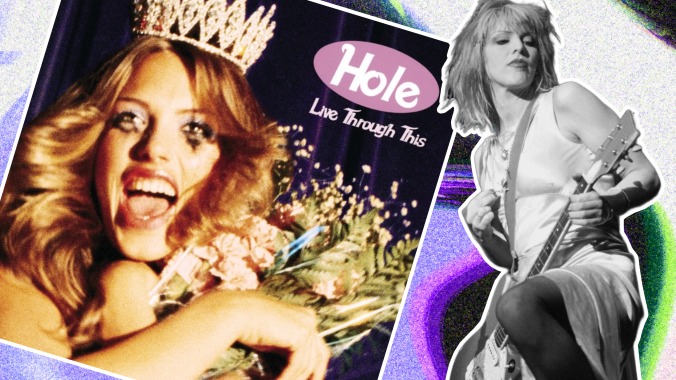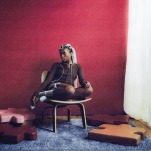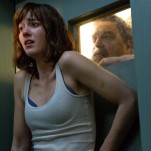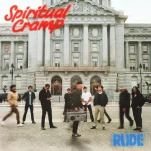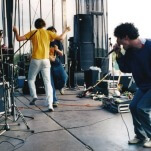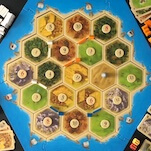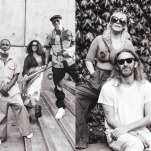Growing up, I thought every woman I saw was the Venus de Milo—with the delicacy of carved marble framing their strong, motherly bodies, chasing the kids around the block while their hair followed them like a silky scarf. Carrying their offspring on their hips like they were as weightless as the light in their eyes, they managed a husband and multiple kids while maintaining an air of dainty elegance. I was under the impression that women ruled the world with this quiet confidence, all while wrapped in gorgeous garments and toting around their bottomless bags full of problem-solvers. These women were beautiful and powerful and woefully untouchable to my scraped knees, oversized t-shirts and hair I refused to have combed. Yet that never stopped me because I was one of them—a messy, boyish version, sure, but still a woman with the potential to become polished marble even from my rocky beginnings.
My naive bubble burst when I was hit on as a joke in seventh grade, had things thrown at me in study hall because I didn’t speak and, when even my female peers began to make comments about my appearance, I knew I wasn’t one of the marbled statues I looked up to but, rather, an unfinished draft on the floor of a sculpture’s workshop. Once I realized that not everyone had the same awe-inspiring view of women and their courageous beauty, I shrank to a shell of the vibrant, unashamed and outspoken kid I once was. I let it get to me because I didn’t like what I saw, either. I wasn’t statuesque or porcelain-skinned; I was scrawny and acne-riddled. So, I gave up on trying to find a way to fit into femininity because it felt unreachable.
I spent most of middle school shoving myself in any corner I could find, hoping that the cinder block walls would open their milky white jaws and swallow me whole. I wasn’t comfortable in my skin—it was written all over my oversized flannel shirts and the unbrushed hair that curtained around my face—and I often found myself alone and my escape became film and music, if only to not feel so isolated. Most of my playlists were full of my parents’ favorite bands or what I’d heard on Top 40 radio, until I started to venture into finding media that I felt I could claim as mine. One of my earliest memories of feeling like I mined a gem of my very own was when I watched Jennifer’s Body in all its campy, misandrist, gory glory. Maybe I needed to think all of it could be true—a homecoming queen could be both a disgusting monster and a stunning siren. Watching Megan Fox become this grotesque creature devouring men without a care in the world was healing in a way I couldn’t describe. And, with so much time spent enveloped in fictional narratives, I often forgot what was real—which could be dangerous but, ultimately, helped me survive long enough to find my strength.
In that movie, I heard “Violet” for the first time. Courtney Love’s growl rattled my brain. I had heard men emit that same guttural sound before, but never had I heard a woman rip through her vocals like that. It played out over the credits, while Amanda Seyfried’s Needy utterly ravaged the creepy members of the demon-worshiping band that morphed Fox’s Jennifer into a succubus. Watching the “loser” girl character get her revenge against these men who ruined her best friend’s life, it was unbelievably satisfying—as they thought they had a right to her body to fulfill their desires, not caring who they were destroying in the process. Even more, it opened my eyes to a world of female musicians who weren’t afraid to get nasty and look even gnarlier doing it. The profoundly flawed Love became a quasi-idol in my quest to discover how I could fit into a narrative of femininity when I felt like I didn’t have a place.
Love had spent years rotating through bands—including her stint in Pagan Babies with future Babes In Toyland frontwoman Kat Bjelland and L7 bassist Jennifer Finch—and minor acting roles as well as rotating through various strip clubs, before finally settling in Los Angeles resolute to start a band that was going to last. Plastering an ad in the now-defunct local newspaper The Recycler that read “I want to start a band. My influences are Big Black, Sonic Youth, and Fleetwood Mac,” Love caught the attention of Eric Erlandson. In the summer of 1989, the two musicians met up at a coffee shop and, instantly, Love knew he was the one, claiming he had a certain Thurston Moore quality. Soon, the duo became a trio after adding Lisa Roberts, who became the original bassist of the band and the first of a rotating cast of four-stringers that orbited around the core two at the center of Hole.
Much like their career as a band, Hole’s music was quick and dirty—at least it was on their 1991 debut, Pretty on the Inside. After soliciting Kim Gordon of Sonic Youth to produce the album by sending her a letter, a Hello Kitty barrette and copies of the band’s early singles, their introduction was a raucous, fiery mass of rage and adolescent trauma. Love had been writing these diaristic songs from the minute her father was allegedly dosing her with LSD as a child up all the way through the years she spent as a misguided youth cycling through strip clubs and being thrown into juvenile correctional facilities. By the time Live Through This was written, Love was determined to make a more melodic and mature-sounding record, having expelled most of her childhood angst on the previous LP. She was entering a new phase of life as a mother and partner to one of the most iconic rock-stars of the ‘90s; the muse was inescapable.
In October 1993, Love, Erlandson, bassist Kristen Pfaff and drummer Patty Schemel began recording their future magnum opus at Triclops Sound in Marietta, Georgia. The stories Love was telling on Live Through This were born of a new phase of life riddled with the horrors of the spotlight, ridicule and motherhood. It’s not that there wasn’t pain already baked in—she more than proved that with the darkness that poured from her pen on Pretty on the Inside, with its unflinching depictions of sex, self-hatred and violence. With Love, a lot of the time there isn’t much left up to interpretation. She paints a gruesome scene with her language and her barbed-wire singing. The landscape of Hole songs smack you upside the head with a grim reality. On Live Through This, though, she was pulling from a diary that the public had ripped from her hands without permission. Her whole life had been placed under a microscope, and now she finally had the chance to tell us what she thought about those prying eyes and acid-tongued antagonists.
Unfortunately, her tie to rock ‘n’ roll’s Clinton-era savior would lead to another tragedy in the line of traumas she had already lived through. When Kurt Cobain died by suicide only mere days before the release of Live Through This in April 1994, a moment of triumph became marred by devastating personal loss. Her chance to tell her side of the story that the public had created themselves was quickly overshadowed by Cobain’s untimely death, which lingered in the background of their shared life together—as suicide doesn’t happen all at once, arriving as a side-effect of a slow decay that leaves you with nothing.
Love even said it herself: “I lived with someone who said every day that he was going to kill himself, […] and that resulted in a lot of hysteria on my part.” She quickly became Courtney Love: Kurt Cobain’s widow instead of Courtney Love: badass, Platinum-selling rockstar. Even with its massive success, Live Through This remained eclipsed under the enormous weight of Cobain’s passing. But now, 30 years later, the album remains a testament of Love unapologetically giving us a piece of her mind and perspective, and while Kurt was a huge part of her life, she refused to be defined by him—in marriage and in widowhood.
With a cover inspired by another underestimated complex female character, Carrie White, Love told us who she was even if people weren’t ready to listen. Like many autres of the female experience before her, Love’s lyricism drips with misery—anthems for the girls who lost their innocence too young and became doomed to continue living in a world that couldn’t hold them. Live Through This is a Dorian Gray-esque portrait of womanhood, showing how ugly it can genuinely be. The album kicks off this new softer sound with a melodic riff and a vocal delivery from Love that is surprisingly delicate—before it all rips open into her characteristically monstrous growl, spitting: “Go on, take everything / Take everything, I want you to,” daring the world to try and destroy her because she knows she can take it. “Yeah, I’m the one with no soul / One above and one below.”
Live Through This became my soundtrack for surviving middle school. My parents couldn’t understand the crushing pain of not being accepted by their peers, as they both were at the top of the social food chain in high school and the widening generational gap between us—with the latest era of the internet piling on the already-intolerable fits of isolation and social pressure outside the classroom—endured. It was hard to look my mother in the eyes and tell her I didn’t feel beautiful, so I turned to the one woman I knew could understand self-hatred, the same one who was in my ears saying “I’m Miss World / Watch me break / And watch me burn” on a loop until I believed I wasn’t the only one feeling like I could utterly snap at any moment. While my friends were listening to One Direction, reminding them they are beautiful even if they were so unaware or Ariana Grande sweetly filling their minds with romantic fantasies, I was getting advice from one of the most reviled female musicians of the last 30 years. Maybe it was unhealthy to fuel this self-loathing by piling more self-loathing on top of it, but it’s better to be miserable with someone else than to crumble alone.
I was getting this “perfect woman” narrative from all sides at this time in my life. At school, I watched the gorgeous girls strut down the halls without a hair out of place; after school, as a ballerina, I was constantly being corrected to try and become that marbled woman I knew I’d never be. At a time when my body was undergoing its own uncontrollable cryptic metamorphosis, I was reprimanded for not being able to conduct every cell in my body in a graceful harmony. My teacher was an unattainable beauty determined to mold us into this prima ballerina standard of exquisite radiance. My body was not mine to direct but her to pose as a life-sized marionette, just as she was taught before me—only gorgeous as this sugar plum fairy vision of dainty excellence. I was repeatedly told how to stand, how to breathe, how to smile. It was a guidebook for a traditional viewpoint of how women should behave.
“Doll Parts” expertly depicts this “sit still, look pretty narrative,” with Love equating herself to a lifeless doll. To my surprise, Love fell into this stereotypical role of an envious girlfriend pleading for attention. It was a fascinating perspective from a woman who, in my eyes, was fearless, but when it came to her relationships, she was prone to insecurity and feeling like a toy tossed aside only to be picked up when she was wanted. On the outside, she was this unstoppable force, never taking shit from anyone. On the inside, she was just like every girl hopelessly chasing after a boy she loved. I listened to Love—this woman who I believed to be perfect in her own chaotic and boisterous way—say that even she must sometimes conform to the standard just like the rest of us.
Courtney Love was flawed in the way I always feared. She, too, could succumb to feelings pedaled by this societal standard. In a way, it was disappointing to learn that someone I thought could never be bothered by what anyone thought of her could still be brought down by something as simple as a boy. Yet when I really considered it, this fault made her feel more attainable to my deathly insecure self. Though she wasn’t the model of femininity I was taught to worship, I still saw her as the untouchable opposite—staunchly belligerent and fiercely independent. This crack in the facade brought me to the conclusion that she, too, could be one of those marbled creations buried underneath a thick layer of mud and dirt.
As the reality that my idol was also doomed with insecurity settled in, I watched my friends’ insecurities eating away at their confidence enough to surrender their will to the advances of men in an effort to find their beauty again. They weren’t exploring sexual curiosities. They were desperately seeking validation from the source they were taught would satisfy these needs. These men were taking advantage of my friends—getting them to perform sexual favors on the bus ride home while promising it’d be their secret. But it was never hush-hush, as I heard whispers about them in the halls—what they had done and how they “begged to do it.” It was sickening to witness, and Love details this vile dilemma of male-endowed possession in “Asking For It,” “Jennifer’s Body” and “Softer, Softest.” The tracks examine sexual exploitation, something she and many of my friends were no strangers to by teenagerdom, and she captures the loss of innocence and trust with one image in “Jennifer’s Body”: “He said, ‘I’m your lover, I’m your friend, I’m pure,’ and he hits me again / With a bullet, number one.” Later on the album, in “Softer, Softest,” Love returns to the conflations of trust, insecurity and misguided love when she sings, “I tell you everything / And I hope that you won’t tell on me.”
I was out of my depth and didn’t know how to help my friends back then—all I could do was be there for them. In “Asking For It,” Love says, “If you live through this with me / I swear that I will die for you,” which perfectly summarizes surviving girlhood’s ruinous clutches. This was one of those moments that made me realize that maybe my place in femininity wasn’t to be this untouchable, gorgeous thing. Embracing that kind of preciousness only got me misery, trauma and cursed retrospect. No matter how “proper” you try to be, you’ll never be seen as equal by everyone, so why try? For all her fallible advice, the one thing Love beat into my brain is people will see what they want, which is why she wrote in a way that was honest to her. Maybe it is vulgar to talk about motherhood like she did in “Plump,” depicting an egregious scene when she sings, “Shakes his death rattle / Spittle on his bib / And I don’t do the dishes / I throw them in the crib.” But it’s her raw and honest truth about how torturous being a mother can be. She wasn’t afraid to confront the ugly truths because she already knew what people were thinking about her, so why sugarcoat these very difficult things to fit them into the narrative of immaculate motherhood? If men getting ugly could be seen as strong why couldn’t it be the same for women?
When I became conscious of this gross systematic power imbalance between genders, I constantly found myself wondering: In a world where I’m often reminded my body isn’t my own, where can I find the strength to protect it? The answer was right there in my ears, when Love told me that “you should learn how to say, ‘No.’” I can fight back by shamelessly taking up space, which Love has done her entire life—to a dizzying extent, at times, but fearlessly nonetheless. She expounds upon this in “Gutless,” as she once again baits people into trying to tear her down. “Just you try to hold me down / Come on, try to shut me up,” she taunts, before declaring how “gutless” these people are. All bark and no bite—that lesson I learned quite quickly when I started to stand up for myself.
What Live Through This did for me, more than anything, was give me the tools to articulate the harsh realities of womanhood with a spoonful of sugar-coated badass language. You can be hard but still melt in the arms of a lover; you can speak your mind without fear; being messy and beautiful are mutually exclusive. You deserve to own your body and be taken seriously when you say “No.” Being a woman isn’t just a delicate oil painting, it’s a shattered mosaic of experiences, traumas and disappointments. But the thing is, we are in it together—never just one simple explanation but an entire vocabulary.
Despite initially being transcended by Cobain’s death and constant flagrant claims of Hole’s inferiority to Nirvana, Live Through This reached Platinum in under a year and remains a crucial cornerstone in rock ‘n’ roll’s canon—as both a masterpiece of female angst and Courtney Love’s brazen nerve. She survived the terrors of a deck stacked against her—and if she could come out with a winning hand, then I could, too. Often underestimated and far-too demeaned, Love never stopped being herself, being unafraid of being hated and unwilling to compromise. It’s a frozen-in-time relic that anyone trapped in the throes of femininity will wade through at some point, just like Hole’s outspoken counterparts like Liz Phair and PJ Harvey. With crooked and sharpened teeth and lipstick smeared across a dangerously beguiling smile, Live Through This will always dare to scream all of the words people have too-often been afraid to raise from a whisper.
Olivia Abercrombie is Paste‘s Associate Music Editor, reporting from Austin, Texas. To hear her chat more about her favorite music, gush about old horror films, or rant about Survivor, you can follow her on Twitter @o_abercrombie.
